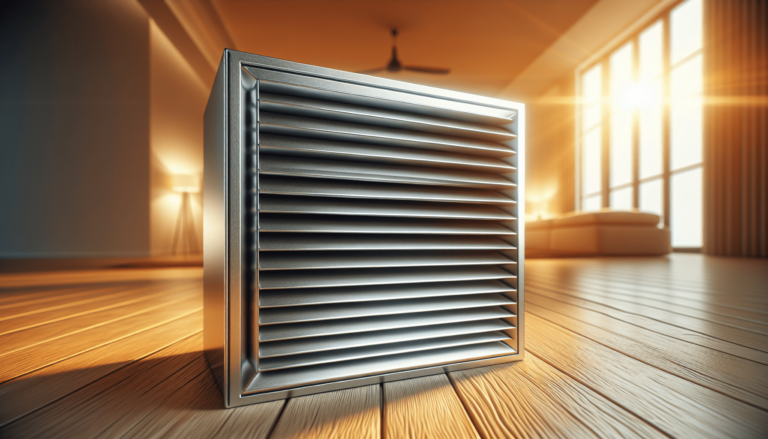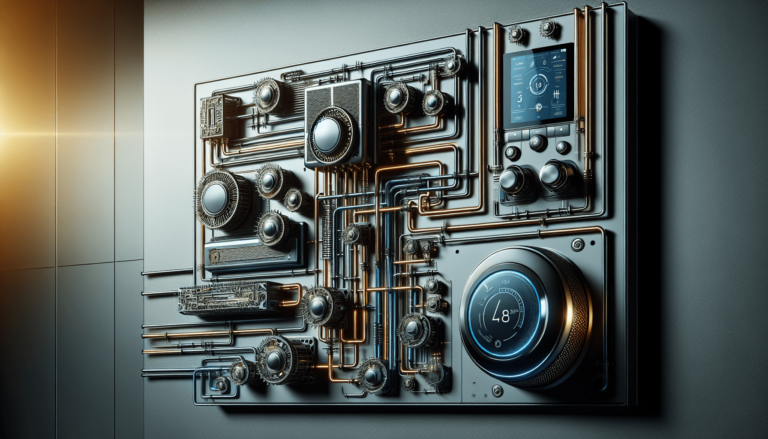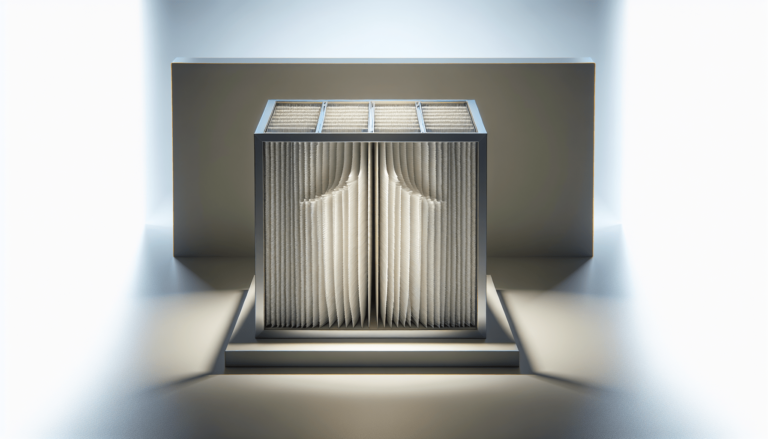

HVAC Services
Get Professional Repairs From The Area's Trusted HVAC Technicians. Ask About Our Services! We Offer Professional Heating & Cooling System Repairs And Guarantee Long-Lasting Results.
Got Question? Call us: (850) 678-2665Financing
Winter HVAC Tips: Keeping Warm Without Breaking The Bank
Discover valuable HVAC tips to keep your home warm during winter without breaking the bank. Maintain a cozy and comfortable home while staying within your budget.
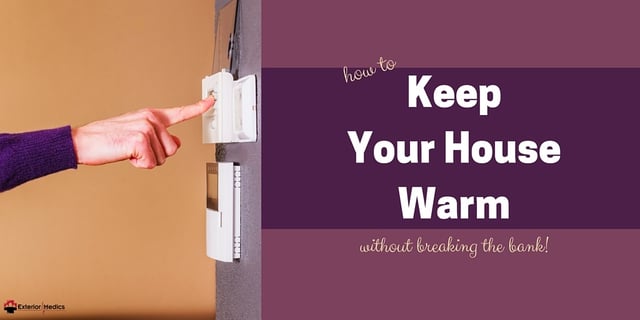
As the winter season approaches, staying warm becomes a top priority. However, with the cold weather also comes the concern of skyrocketing heating bills. Fear not, for we have gathered some valuable HVAC tips to help you keep warm without breaking the bank. By implementing these suggestions, you can achieve a cozy and comfortable home while also maintaining a reasonable budget. So sit back, relax, and let us guide you through the art of staying warm efficiently during the winter months.
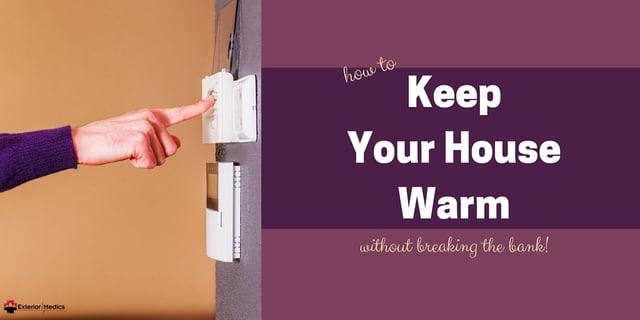
This image is property of www.exteriormedics.com.
1. Schedule Regular HVAC Maintenance
1.1 Importance of regular maintenance
Regular HVAC maintenance is crucial for ensuring your system operates efficiently and effectively during the winter months. By scheduling regular maintenance, you can prevent potential issues before they become costly repairs or emergencies. Regular maintenance also extends the lifespan of your HVAC system, saving you money in the long run.
1.2 Scheduling professional maintenance
It is highly recommended to hire a professional HVAC technician to perform maintenance on your system. These professionals have the knowledge and experience to thoroughly inspect and tune up your equipment. They will clean and lubricate components, check for any signs of damage or wear, and ensure that your system is running optimally.
1.3 DIY maintenance tips
While professional maintenance is essential, there are also some DIY maintenance tasks you can perform to supplement the professional service. Regularly check and clean or replace air filters to improve airflow and efficiency. Keep the area around the outdoor unit free from debris to maintain proper airflow. Additionally, be mindful of any unusual sounds or odors coming from your system and address them promptly.
2. Seal and Insulate Your Home
2.1 Identifying air leaks
One of the primary culprits of heat loss during the winter is air leaks in your home. To identify these leaks, carefully inspect windows, doors, and other openings for any noticeable drafts or gaps. You can also use a lit candle or incense stick near potential air leak spots – if the flame flickers or the smoke wavers, it indicates air movement.
2.2 Sealing windows and doors
Once you have identified air leaks, it’s essential to seal them properly. Use weatherstripping or caulking to seal any gaps around windows and doors. This simple step can significantly reduce drafts and prevent heat loss. Additionally, consider adding door sweeps to the bottoms of exterior doors to further eliminate drafts.
2.3 Insulating walls and attics
Insufficient insulation in your walls and attics can lead to significant heat loss. Consider adding or upgrading insulation in these areas to improve energy efficiency. Proper insulation helps trap warm air inside during the winter and keeps cool air in during the summer. Consult a professional to determine the appropriate insulation for your home.
2.4 Importance of weatherstripping
Weatherstripping is an affordable and effective way to seal gaps around windows and doors. It helps prevent air leaks and minimizes heat loss. Invest in high-quality weatherstripping materials, such as adhesive strips or door sweeps, for the best results. Regularly inspect and replace weatherstripping as needed to maintain its effectiveness.
2.5 Insulating ductwork
Don’t forget about your ductwork when it comes to insulation. Properly insulating your ducts can prevent heat loss and ensure that warm air is efficiently delivered throughout your home. Insulated ductwork helps maintain the desired temperature in each room, reducing strain on your HVAC system and improving overall energy efficiency.
3. Optimize Your Thermostat Settings
3.1 Setting the thermostat temperature
Setting an appropriate temperature on your thermostat is vital for comfort and energy savings. During the winter months, aim for a temperature that is comfortable for you and your family, while being mindful of energy consumption. Consider setting your thermostat to a slightly lower temperature during the day when everyone is out of the house, and increase it when you return home.
3.2 Utilizing programmable thermostats
Programmable thermostats offer a convenient and energy-saving solution for optimizing your HVAC system. These thermostats allow you to schedule temperature changes based on your daily routine. You can lower the temperature automatically when you’re away and have it increase before you return, ensuring comfort while saving energy.
3.3 Adjusting temperature at night
During the night, when you’re bundled up in bed, consider lowering the temperature a few degrees. Many people find lower temperatures more conducive to restful sleep. By decreasing the thermostat temperature at night, you can save on heating costs without sacrificing comfort. Just be sure not to set it too low, as excessively cold temperatures can impact sleep quality.
4. Take Advantage of Natural Heat
4.1 Utilizing sunlight
Sunlight is a free and natural source of heat during the winter months. Open curtains and blinds during the day to allow sunlight to enter your home and warm up the space naturally. Positioning furniture near windows can help maximize the heat capture from sunlight.
4.2 Opening curtains during the day
As mentioned, opening curtains during the day allows sunlight to enter your home and provide natural warmth. However, be sure to close them during the evening to reduce heat loss. Thick curtains or thermal blinds can also help insulate windows and prevent drafts.
4.3 Using window coverings at night
Closing window coverings at night helps create a barrier between your warm interior and the cold outdoor temperatures. Insulating curtains or blinds can significantly reduce heat loss through windows. Consider investing in window coverings that have thermal properties to enhance their insulation capabilities.

This image is property of www.delcohvac.com.
5. Utilize Ceiling Fans Correctly
5.1 Reversing ceiling fan direction
Have you ever thought of using ceiling fans during the winter? Reversing the direction of your ceiling fan can help distribute warm air more evenly throughout your home. Set the fan to operate in a clockwise direction at a low speed. This will gently push warm air down from the ceiling, keeping you cozy and reducing reliance on your heating system.
5.2 Reducing heating costs with fans
Ceiling fans can help to supplement your heating system and lower your heating costs. By effectively circulating warm air, you can achieve a comfortable temperature using less energy. This is particularly beneficial in larger rooms where it may take longer for the warm air to reach all corners.
5.3 Setting fan speed
When using ceiling fans during the winter, it’s important to set the fan speed correctly. Choose a low or medium speed to avoid creating a draft in the room. Aim for a gentle, consistent airflow that helps distribute warm air without cooling down the space too much.
6. Use Energy-Efficient Heating Systems
6.1 Advantages of energy-efficient systems
Investing in energy-efficient heating systems can provide several benefits. These systems are designed to maximize energy conservation and minimize heat loss. They can result in lower utility bills, a reduced carbon footprint, and increased comfort as they provide consistent and precise heating.
6.2 Comparing different heating options
There are various energy-efficient heating options available, such as heat pumps, furnaces, and boilers. Each has its advantages and considerations, depending on your specific needs and budget. Research and consult with HVAC professionals to determine the most suitable option for your home.
6.3 Investing in a programmable thermostat
As mentioned earlier, a programmable thermostat is an excellent companion to energy-efficient heating systems. Combining the two allows you to customize temperature settings and maximize energy savings. When choosing a programmable thermostat, ensure compatibility with your heating system and consider advanced features such as Wi-Fi connectivity for remote control.

This image is property of www.homeadvisor.com.
7. Upgrade Your Insulation
7.1 Signs of insufficient insulation
Insufficient insulation can result in increased heat loss and energy waste. Signs of insufficient insulation may include cold spots, drafts, and constantly running heating systems. If you’re experiencing these issues, it may be time to consider upgrading your insulation.
7.2 Types of insulation materials
There are various types of insulation materials, each with its benefits and purposes. Common options include fiberglass batts, cellulose, spray foam, and rigid foam. Consult with professionals to determine the most appropriate insulation material for your home based on factors such as budget, climate, and structural considerations.
7.3 Hiring professionals for insulation upgrades
While some insulation upgrades can be DIY projects, it is often recommended to hire professionals for optimal results. Insulation professionals have the expertise and tools to install insulation correctly and efficiently. They will ensure that insulation is applied to the correct thickness and in a manner that minimizes air leakage and heat loss.
8. Properly Maintain Heating Equipment
8.1 Cleaning and replacing air filters
Regularly cleaning or replacing air filters is essential for the proper functioning and efficiency of your heating equipment. Dirty filters restrict airflow, making your heating system work harder and consume more energy. Clean or replace filters at least every three months, or more frequently if you have pets or allergies.
8.2 Clearing vents and registers
Ensure that vents and registers are free from obstructions, such as furniture or drapes. Blocked vents restrict airflow and can prevent proper heating. Make a habit of checking and clearing vents regularly to ensure optimal performance.
8.3 Checking for carbon monoxide leaks
Carbon monoxide leaks can be life-threatening. Invest in a carbon monoxide detector and regularly check its batteries to ensure it is functioning properly. Consider scheduling a professional inspection to check for any potential gas leaks or issues with your heating equipment.
8.4 Monitoring fuel levels
If your heating system operates on fuel, such as oil or propane, it is crucial to monitor fuel levels regularly. Running out of fuel during the peak of winter can leave you without heat. Keep an eye on fuel levels and schedule deliveries accordingly to avoid any disruptions in heating.
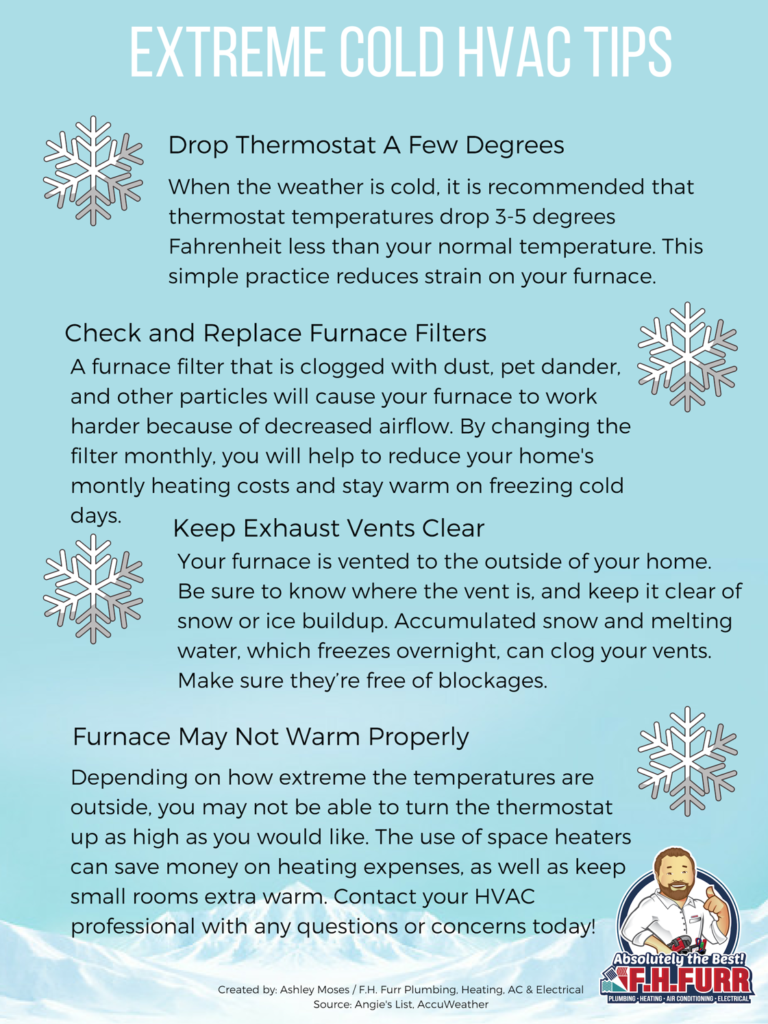
This image is property of www.fhfurr.com.
9. Utilize Zoning Systems
9.1 Benefits of zoning
Zoning systems divide your home into multiple zones, each with its thermostat, allowing you to control the temperature independently in each zone. This offers improved comfort, energy efficiency, and cost savings, as you can focus heating on occupied areas and reduce unnecessary heating in unoccupied zones.
9.2 How zoning works
Zoning systems utilize dampers in ductwork to direct heated air only to specific zones in your home. Each zone has its thermostat, allowing you to set individual temperatures for different areas. By customizing heating according to occupancy and preferences, zoning systems prevent wasting energy and enable tailored comfort.
9.3 Implementing zoning in your home
Implementing zoning in your home can be done by retrofitting your existing HVAC system with a zoning control panel and dampers. However, this is typically a job best left to experienced HVAC professionals. They will assess your home’s layout, heating system, and individual needs to design and install a zoning system that maximizes energy efficiency and comfort.
10. Consider Energy-Saving Tips
10.1 Lowering the thermostat when away
When no one is home, lowering the thermostat by a few degrees can result in significant energy savings. Programmable thermostats make this process easy by allowing you to schedule temperature adjustments automatically. By reducing heating when the house is vacant, you can save on energy costs without sacrificing comfort.
10.2 Using curtains as insulation
Curtains can serve as an extra layer of insulation for your windows. When closed, they create a barrier that helps prevent heat loss. Thick, insulating curtains are particularly effective at reducing drafts and improving energy efficiency. Consider using curtains in conjunction with other insulation methods for optimal results.
10.3 Regularly maintaining ductwork
Ductwork can develop leaks or become obstructed over time, leading to energy loss and reduced efficiency. Inspect your ductwork regularly for any signs of damage or leaks, and seal them accordingly. Additionally, consider scheduling professional duct cleaning to remove any dust, debris, or allergens that may be affecting airflow.
By following these comprehensive tips and implementing energy-saving practices, you can keep warm during the winter months without breaking the bank. Remember, regular HVAC maintenance, proper insulation, optimized thermostat settings, and mindful energy consumption all contribute to a cozy and cost-effective home environment. Stay warm and enjoy the winter season!





